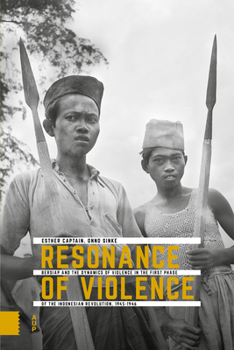Resonance of Violence: Bersiap and the Dynamics of Violence in the First Phase of the Indonesian Revolution, 1945-1946
(Part of the Onafhankelijkheid, dekolonisatie, geweld en oorlog in Indonesië, 1945-1950 Series)
In early 2022, the issue of whether or not to remove the word 'bersiap' from an exhibition at Rijksmuseum Amsterdam prompted parliamentary questions, the initiation of legal proceedings against the museum, and an unusually fierce public debate about a word that had hitherto only been known to the Dutch Indies community. This book provides background and depth to this debate. In the first months following the declaration of independence, the battle-cry of 'bersiap ' resounded in countless cities and villages in Indonesia. The call to make ready for the young nation's struggle for freedom marked the start of the Indonesian Revolution, ushering in a period of extreme violence. Resonance of Violence outlines the dynamics of the extreme violence, in which Indonesian combat groups took up arms against Indo-Europeans, Moluccans, Dutch and Chinese, as well as Japanese civilians and disarmed Japanese and British (Indian) soldiers. The book also emphatically situates this terrifying period within the broader context of intra-Indonesian violence and the violence used by the Japanese, British and Dutch side against Indonesian non-combatants. It covers not only Java and Sumatra, but also the islands beyond, as well as the difficult task of establishing casualty numbers and the 'rediscovery' of the bersiap period in the 1980s.





